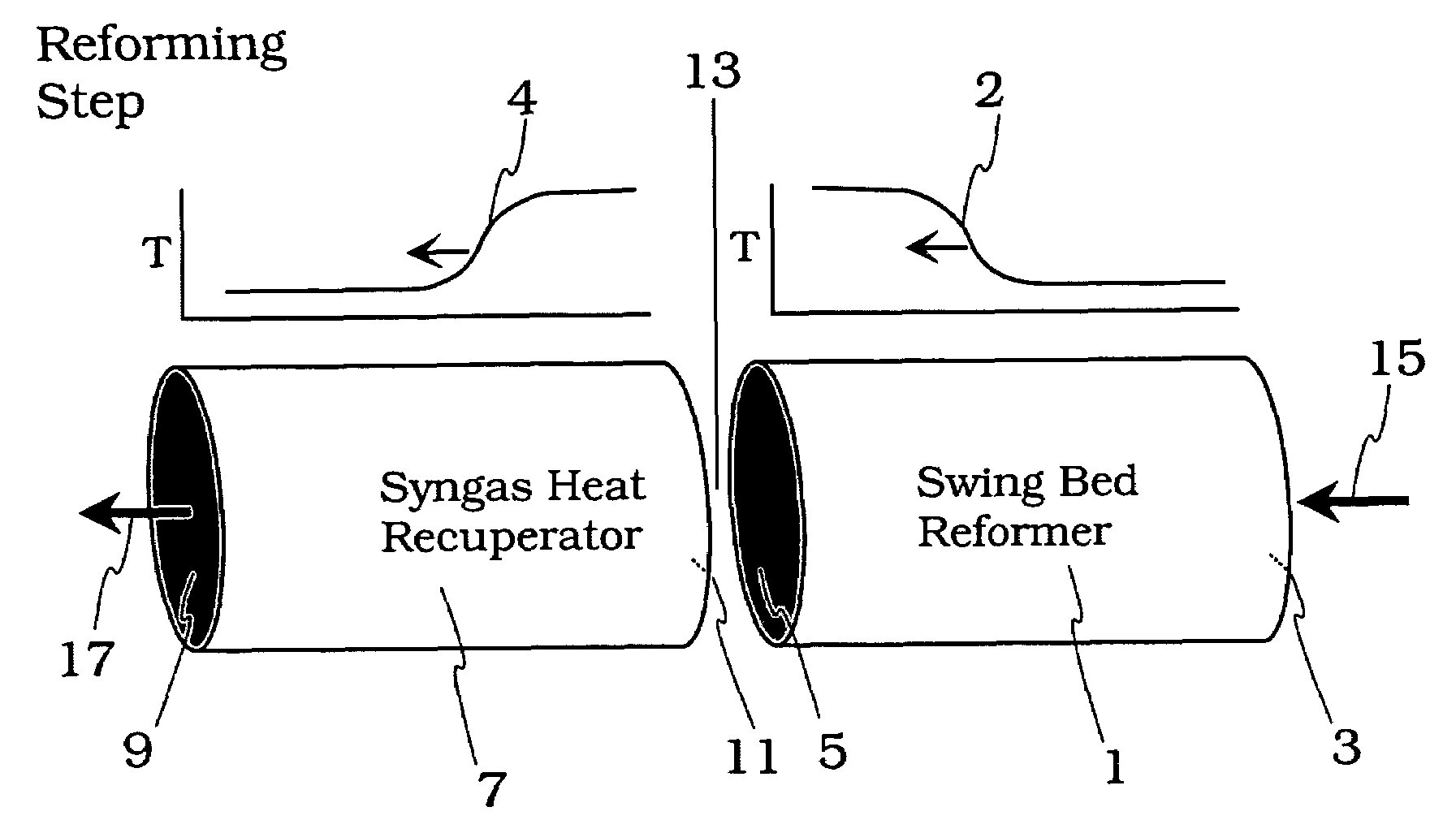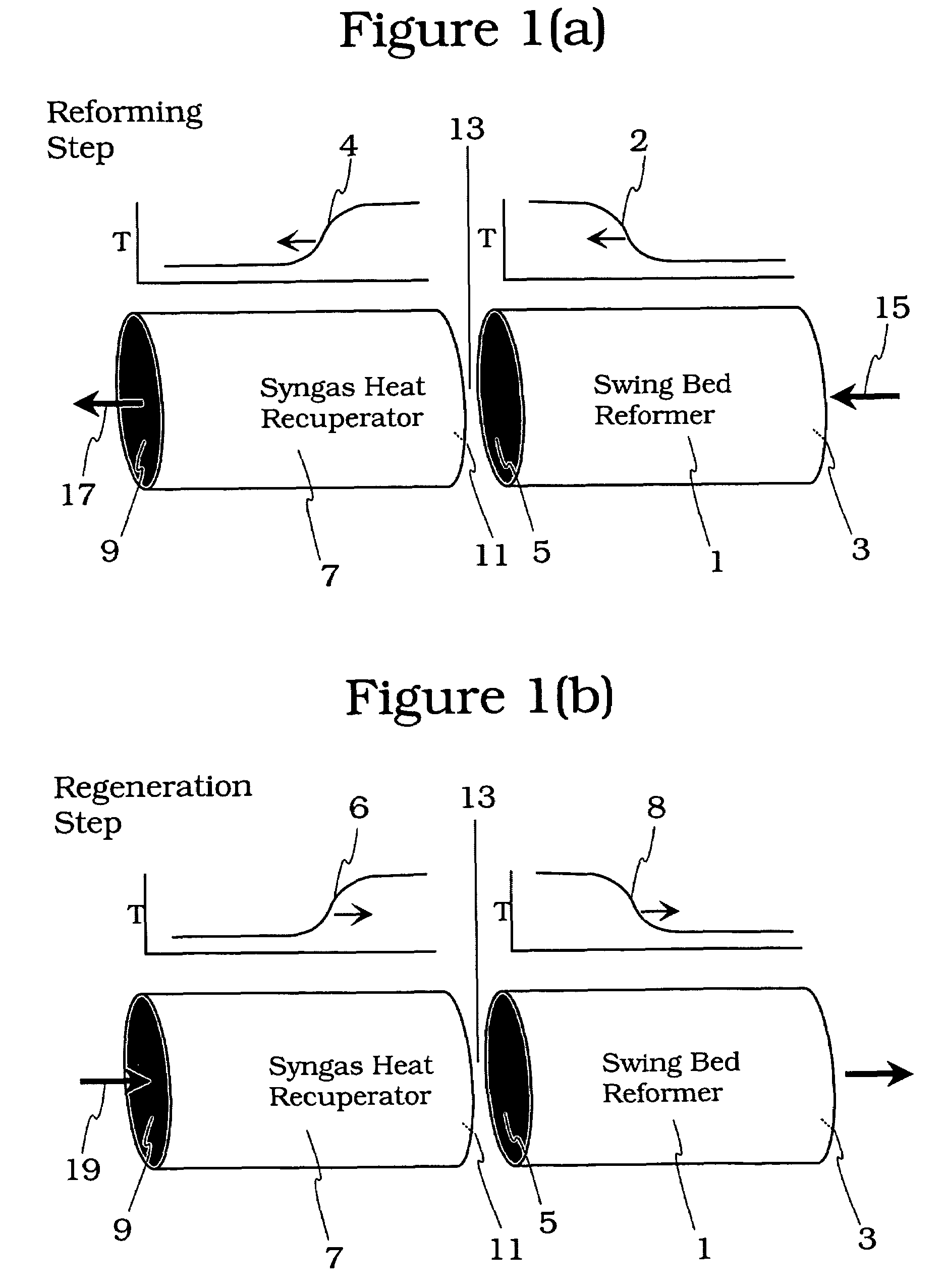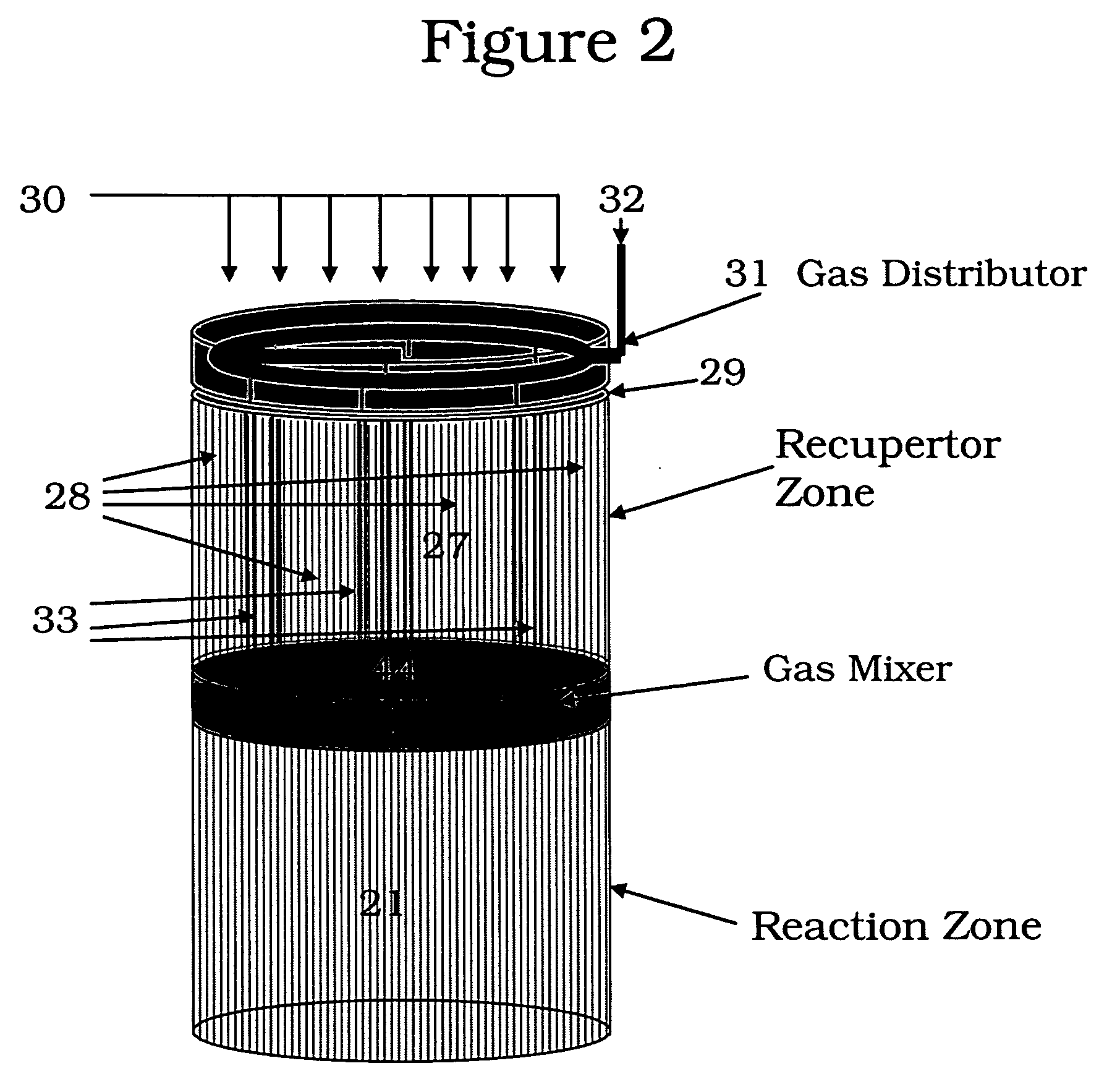Controlled combustion for regenerative reactors
a regenerative reactor and controlled combustion technology, applied in the direction of metal/metal-oxide/metal-hydroxide catalyst, energy input, hydrocarbon by hydrocarbon cracking, etc., can solve the problems of reducing the durability of the reactor system, affecting the efficiency of the reactor, and difficult to fabricate and maintain carefully-dimensioned shapes for use at high temperatures
- Summary
- Abstract
- Description
- Claims
- Application Information
AI Technical Summary
Problems solved by technology
Method used
Image
Examples
example 1
[0050]The following is an example of an asymmetric reverse-flow reactor system used to perform methane steam reforming. The reactor is used in the orientation shown in FIG. 2, with the endothermic reforming step flowing upwards through the reactor (not shown) and exothermic fuel combustion step flowing downwards through the reactor (as illustrated). The diameter of the reactor (inside of insulation) is 2.5 inches. The bed components have diameters of about 2.5 inches to fit within the insulation. The reforming or reaction zone (21) is comprised of a 2.5 inch length of 400 cells / in2 honeycomb that has been wash-coated with reforming catalyst.
[0051]The recuperator zone (27) was constructed of several lengths of uncatalyzed 400 cells / in2 honeycomb located at the inlet end that are stacked for a combined height of 1.19 inches.
[0052]A distributor means (31) illustrated in FIGS. 2 and 3 was located above the recuperator honeycomb. It comprised a 1.8 inch diameter ring of 0.25 inch (OD) st...
example 2
[0059]The controlled combustion reverse flow regenerative reaction may be employed for Regenerative Thermal Oxidation (“RTO”) processes. The RTO processes are conventionally used to combust relatively low levels of contaminants from a larger stream of air. FIG. 5a illustrates the conventional configuration of an RTO reactor, FIG. 5b a RTO reverse flow reactor with controlled combustion.
[0060]Referring to FIG. 5a, the process is generally comprised of two regenerative bodies (501, 502) with a burner (503) in between. Contaminated air (504) is heated in the first regenerative body (501), supplemental heat is provided by the combustion of fuel (505) in burner (503) situated between the two regenerative bodies, and the products are cooled to exit the second regenerative body as clean air (506). Frequent flow reversal, switching to streams (504a &506a), is used to keep the sensible heat (of heating or cooling) moving back and forth between the two bodies (501, 502). All or part of the re...
example 3
Autothermal Reforming (“ATR”)
[0063]The controlled combustion reverse flow regenerative reactor may be employed for Autothermal Reforming (“ATR”). In the RTO application, the amount of oxidant (air) is conventionally many times greater than the amount needed for stoichiometric combustion of the contaminants and the supplemental fuel. Also, the incoming contaminated air is near ambient conditions of pressure and temperature. For ATR, the oxidant is present in sub-stoichiometric amounts, and may be absent of any diluents. The fuel is not a supplementary material, but a feedstock to be reformed. Pressures and feed temperature are typically substantially higher. These differences notwithstanding, the application includes substantially the same components as the RTO application and is illustrated in FIG. 5b. Preferably, the feed stream (504) in largest volume flow rate will be distributed into the majority of regenerative body (501) channels via the entry distribution volume (507). The fe...
PUM
| Property | Measurement | Unit |
|---|---|---|
| Temperature | aaaaa | aaaaa |
| Temperature | aaaaa | aaaaa |
| Temperature | aaaaa | aaaaa |
Abstract
Description
Claims
Application Information
 Login to View More
Login to View More - R&D
- Intellectual Property
- Life Sciences
- Materials
- Tech Scout
- Unparalleled Data Quality
- Higher Quality Content
- 60% Fewer Hallucinations
Browse by: Latest US Patents, China's latest patents, Technical Efficacy Thesaurus, Application Domain, Technology Topic, Popular Technical Reports.
© 2025 PatSnap. All rights reserved.Legal|Privacy policy|Modern Slavery Act Transparency Statement|Sitemap|About US| Contact US: help@patsnap.com



